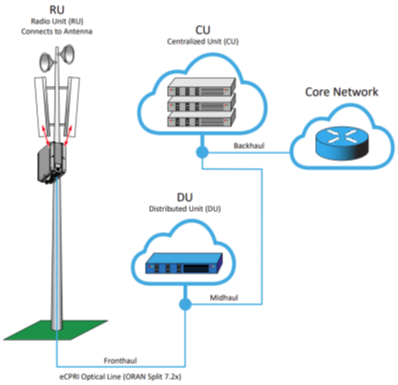
As 5G networks continue to experience steady growth worldwide, a range of compelling use cases are offering communications service providers (CSPs) significant opportunity for new revenue streams. Yet, for 5G technology to reach its true potential, increased innovation and competition are needed to reduce costs, speed deployment, simplify operations, and ensure security. This requires greater advancement of open standards and multivendor interoperability to build a more diversified, open ecosystem.
The 5G Challenge is a two-part competition designed to help create this ecosystem by accelerating the adoption of open interfaces, interoperable components, and multivendor solutions. Hosted by the National Telecommunications and Information Administration’s (NTIA) Institute for Telecommunication Sciences (ITS) in collaboration with the U.S. Department of Defense (DoD), the 5G Challenge is advancing 5G interoperability toward true plug-and-play operation.
As a strong advocate of open standards, Fujitsu is participating in the 5G Challenge: RAN Subsystem Interoperability. With our deep network knowledge, multivendor system integration, and solution maintenance capabilities, we enable our CSP customers to break through their status quo and embrace the future of vendor interoperability.
On the Front Lines
The 5G Challenge Preliminary Event will measure interoperability and performance of selected solutions for the Open RAN subsystem components Distributed Unit (DU), Central Unit (CU), and Radio Unit (RU). Contestants’ hardware and software solutions will be verified in the neutral 5G Challenge host lab at CableLabs.
Fujitsu Network Communications submitted the Fujitsu Triple-Band RU for stage one in the 5G Challenge and was selected as a winner to proceed to stage two. These RUs are fully compliant with the O-RAN interface specifications supporting the 7.2x split network configuration. With support for O-RAN interfaces, the Fujitsu Triple-Band RUs come equipped with one 10G eCPRI optical interface port to communicate with a DU for fronthaul network interfacing. These compact, multiband RUs provide a standard open interface to other O-RAN-compliant vendor DU/CU, Element Management System (EMS), and Service Management and Orchestration (SMO) products, in addition to Fujitsu’s DU/CU and SMO.
As part of the 5G Challenge, Fujitsu will leverage the following features and capabilities of our Triple-Band RU:
- Four antenna ports shared across frequency bands
- Support for bands 71, 29, and 26.
- One 10G eCPRI port for DU communication, one Remote Electrical Tilt (RET) port, and one DC power port, as external interfaces
- 3GPP Release 15 compliance (upgradable to Release 16)
- Software download
- Zero-Touch Provisioning
- IPv4 and IPv6 support
- Downlink Carrier Aggregation (CA)
- O-RAN Hierarchical and hybrid Management Plane (M-Plane) model support.
Additionally, the RU provides key M-Plane management features, such as “start-up” installation, software management, configuration management, performance management, fault management, and file management.
The Fujitsu Open RAN solution, which encompasses O-RAN-compliant hardware, software, and systems integration, is built on a history of commercial RAN deployments and a longstanding commitment to open networks. This solution is a clear demonstration of Fujitsu’s dedication to innovation, interoperability, and multivendor networks.

Figure 1 shows how the RU connects to a DU using the eCPRI optical port
Open to Opportunity
It’s estimated that 5G network connections will reach 1.2 billion by the end of 2022, nearly double the number from 2021. To ensure that 5G networks continue to thrive, we need a diversified market of open, modular, multivendor 5G elements to reduce costs while accelerating innovation, planning, deployment, maintenance, and troubleshooting of security issues. To learn more about how Open RAN enables a diversified ecosystem, visit www.fujitsu.com/us/openran .